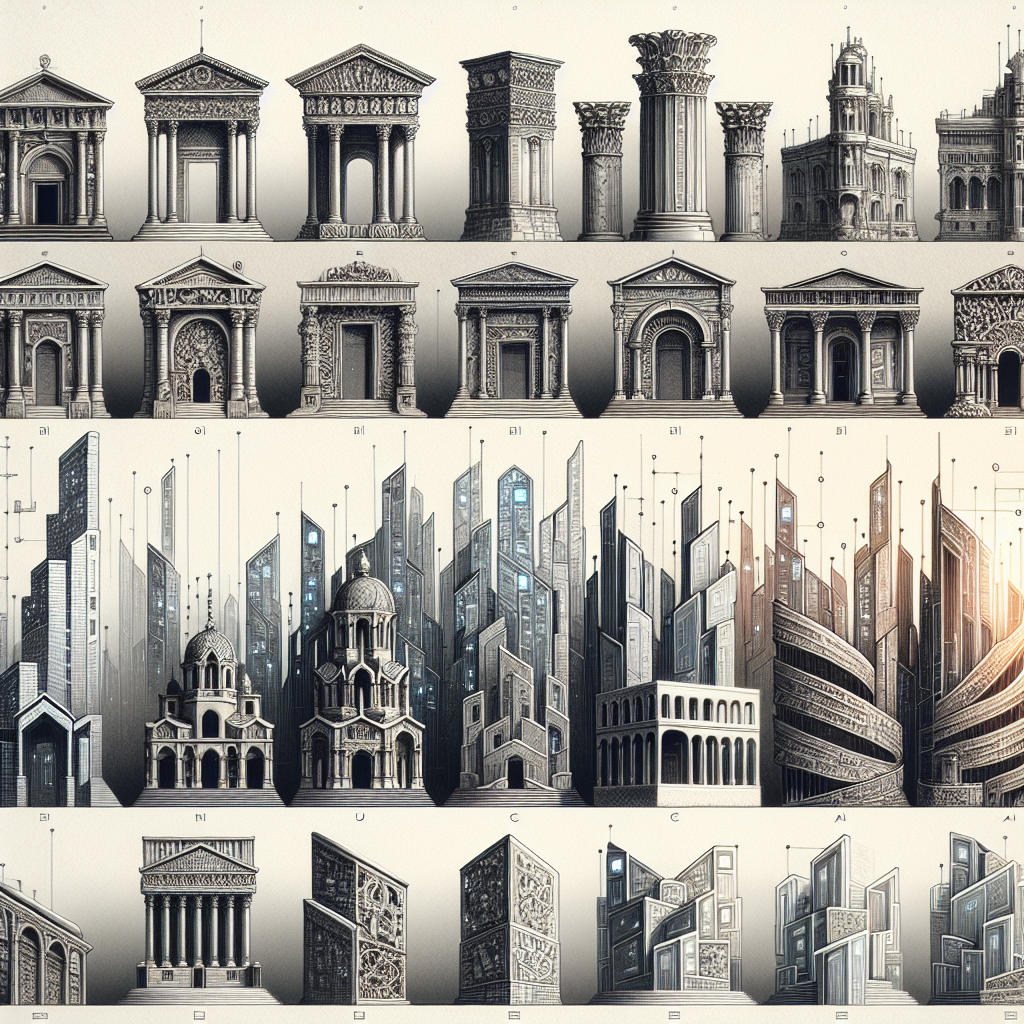Artificial intelligence (AI) has been making significant strides in various industries, and architecture is no exception. The use of AI in architecture is revolutionizing the way buildings are designed, constructed, and even managed. One of the most fascinating aspects of this evolution is how AI is influencing architectural styles and pushing the boundaries of what is possible in terms of design and functionality.
AI in architecture is not a new concept, but recent advancements in machine learning and deep learning have opened up a whole new world of possibilities. By analyzing vast amounts of data, AI algorithms can identify patterns and trends that human designers may not have considered. This can lead to innovative and unique architectural solutions that would have been impossible to achieve through traditional methods alone.
One of the key ways in which AI is influencing architectural styles is through generative design. Generative design is a process that uses algorithms to create thousands of design options based on a set of parameters and constraints. By iterating through these options, architects can quickly explore a wide range of possibilities and discover new and unexpected design solutions.
AI can also help architects optimize their designs for various factors, such as energy efficiency, structural integrity, and cost-effectiveness. By running simulations and analyses, AI algorithms can identify areas where improvements can be made, leading to more sustainable and efficient buildings.
Another way in which AI is shaping architectural styles is through the use of parametric design. Parametric design is a method that uses algorithms to create complex, dynamic, and adaptive forms. By inputting a set of parameters, architects can create designs that respond to changes in the environment, such as sunlight, wind, and temperature. This allows for the creation of buildings that are not only aesthetically pleasing but also functional and responsive to their surroundings.
AI is also influencing architectural styles by enabling architects to explore new materials and construction techniques. By analyzing the properties of different materials and simulating their behavior in different scenarios, architects can push the boundaries of what is possible in terms of form and structure. This has led to the development of innovative building materials, such as 3D-printed concrete and self-healing materials, that were previously unimaginable.
In addition to design and construction, AI is also revolutionizing the way buildings are managed and maintained. By using sensors and IoT devices, buildings can collect and analyze data in real-time, allowing for predictive maintenance and energy optimization. This can lead to significant cost savings and improvements in the overall performance of buildings.
Overall, the evolution of architectural styles with the help of AI is a testament to the power of technology to transform the built environment. By leveraging the capabilities of AI, architects can push the boundaries of design, construction, and management, leading to more sustainable, efficient, and innovative buildings.
FAQs:
Q: How is AI used in architectural design?
A: AI is used in architectural design in various ways, such as generative design, parametric design, and optimization. By using algorithms to analyze data and identify patterns, architects can create innovative and unique design solutions that would have been impossible to achieve through traditional methods alone.
Q: What are some examples of AI in architecture?
A: Some examples of AI in architecture include generative design, which uses algorithms to create thousands of design options based on a set of parameters and constraints, and parametric design, which uses algorithms to create complex, dynamic, and adaptive forms. AI is also used to optimize designs for factors such as energy efficiency, structural integrity, and cost-effectiveness.
Q: How does AI influence architectural styles?
A: AI influences architectural styles by enabling architects to explore new materials, construction techniques, and design solutions. By analyzing vast amounts of data and running simulations, AI algorithms can identify areas where improvements can be made, leading to more sustainable, efficient, and innovative buildings.
Q: What are the benefits of using AI in architecture?
A: Some benefits of using AI in architecture include faster design iterations, more sustainable and efficient buildings, and improved building performance and management. By leveraging the capabilities of AI, architects can push the boundaries of what is possible in terms of design, construction, and maintenance.

